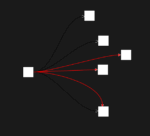We’ve all seen it—a shiny new dashboard causing executives to gather excitedly around screens at launch. Weeks later, the enthusiasm fizzles, user engagement plummets, and your strategic vision drowns in ambiguous visualizations and stale metrics. Dashboard fatigue doesn’t just waste resources; it blindsides your entire data strategy. Instead of amplifying decision-making, poorly designed dashboards misguide teams, reduce confidence, and sabotage innovation efforts.
If your dashboards are starting to drain morale instead of boosting performance, it’s time to wield the power of decisive action. Let’s dive into how your organization can quickly identify, dismantle, and properly rebuild dashboard solutions that actually align with strategic goals, empowering your business instead of harming it.
Why Dashboards Die (And How to Spot It Early)
Dashboards fail not because of malicious intent or incompetence but primarily due to a misalignment between purpose and execution. Businesses often focus heavily on data ingestion, neglecting the true purpose—empowering decision-making with clarity.
Early signs of a failing dashboard might show up subtly at first: steadily declining user logins, an increasing number of unanswered questions about data interpretations, or stakeholders reverting to manual Excel spreadsheets. Recognizing these subtle cues early is critical to prevent dashboards from silently sabotaging your strategy.
Dashboard death is often preceded by a clear disconnect between business goals and dashboard utilization. Perhaps your marketing team has visualizations that don’t drill into actual user behavior patterns, or the finance team’s reports don’t reflect real-time revenue shifts. At Dev3lop, through years of providing data visualization consulting services, we’ve seen that dashboards demanding high cognitive loads or containing irrelevant metrics quickly lose their audience.
A gentle death spiral begins—recommendations go ignored, decisions become gut feeling rather than insight-driven, and strategies fragment as a result.
Diagnosing Dashboard Disease: Challenges That May Require Dashboard Transformation
Once trouble symptoms manifest and dashboards begin to weaken your strategic efforts, rapid diagnosis is paramount. Some common dashboard diseases we identify at Dev3lop include:
- Information overload
- Data irrelevance
- Confusing navigation
- Sluggish performance
Each carries severe strategic implications when left untreated.
For example, an Austin-based client leveraged our consulting to uncover and eliminate data bottlenecks. With streamlined visual storytelling techniques, we helped them quickly diagnose and eliminate irrelevant KPIs, improving clarity and adoption.
Information overload happens when embedding excess visualizations, filters, or measures within a single view. Ambiguity rises, paralyzing decision-making. Irrelevant data splinters strategic focus. Confusing navigation discourages adoption. And sluggish performance—caused by unoptimized queries or slow filters—kills trust.
If this sounds familiar, it might be time to audit your dashboards and rework their foundation.

Tackling Dashboard Problems with Confidence
So you’ve identified a problem—now what?
Killing a dashboard before it kills your strategy requires controlled yet decisive interventions. At Dev3lop, we recommend starting by gathering stakeholders to uncover core needs, frustrations, and goals. Dashboards should foster conversations, not friction.
Next, audit your data sources and integrations. Be assertive in removing vanity metrics that distract from decisions. Prioritize data quality and real-time metrics that actually influence strategic thinking.
Designing Dashboards That Drive Strategy
An impactful dashboard doesn’t just look good—it works.
It tells stories, aligns with strategic priorities, and adapts dynamically to shifting business needs. That’s why we guide clients through interactive dashboard development in Tableau and other tools, blending usability with precision.
Simplify layouts. Create clear visual hierarchies. Tailor by team or role. And most importantly, establish a continuous feedback loop. Dashboards that evolve with users stay relevant longer and remain central to decision-making.
Embracing the Dashboard Lifecycle
Expect dashboards to evolve—or retire.
They’re not static tools. They should mirror business agility. Set review checkpoints, encourage stakeholder input, and redesign when needed. Whether it’s adjusting KPIs or redesigning from scratch, periodic iteration preserves momentum.
Dashboards that once served well can become bottlenecks later. Leaders must be willing to rebuild when necessary. Partnering with experienced consultants like Dev3lop ensures that evolution stays strategic, not reactive.
Ready to Revitalize Your Dashboards?
If your dashboard solutions grow stale or undermine your strategy, don’t wait. Reach out to Dev3lop and explore how our data visualization consulting and dashboard redesign services can bring clarity back to your strategy.
Let’s build dashboards that empower your business—not hold it back.

























